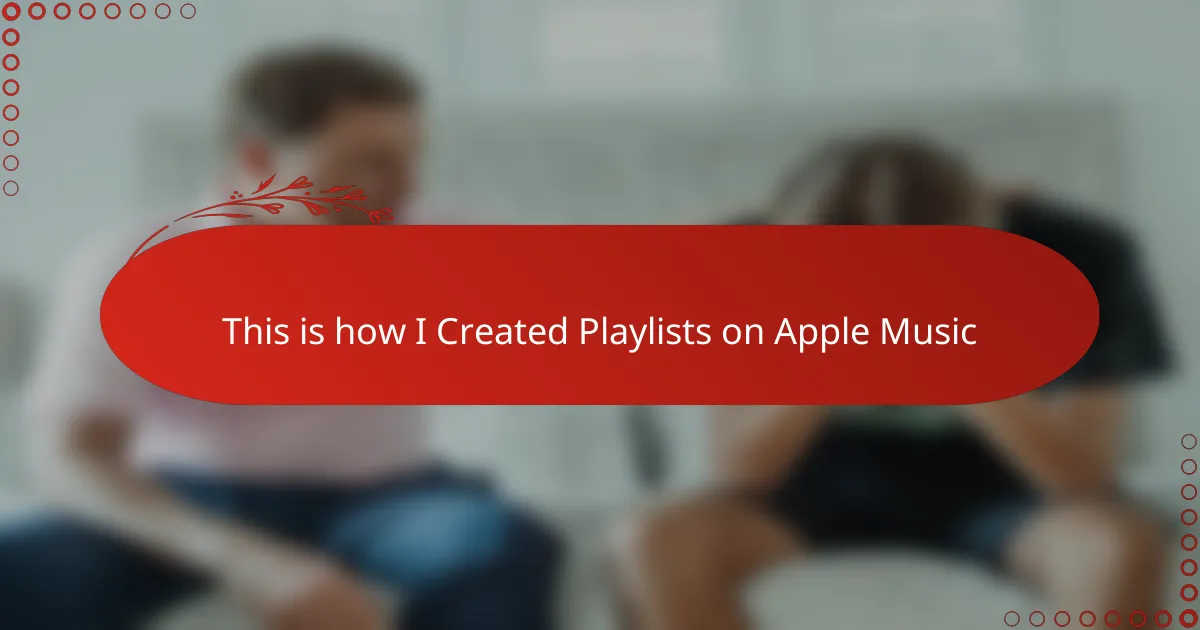Key takeaways
- Radio broadcasting connects listeners through sound and storytelling, requiring skillful curation to maintain engagement.
- Creating Apple Music playlists is a personal and evolving process, blending storytelling with music selection to enhance emotional experiences.
- Curating radio-friendly playlists involves pacing, audience expectations, and balancing familiar hits with new tracks for an engaging listening experience.
- Custom playlists enhance radio broadcasts by creating emotional connections and setting specific tones, fostering audience engagement through carefully chosen sequences.
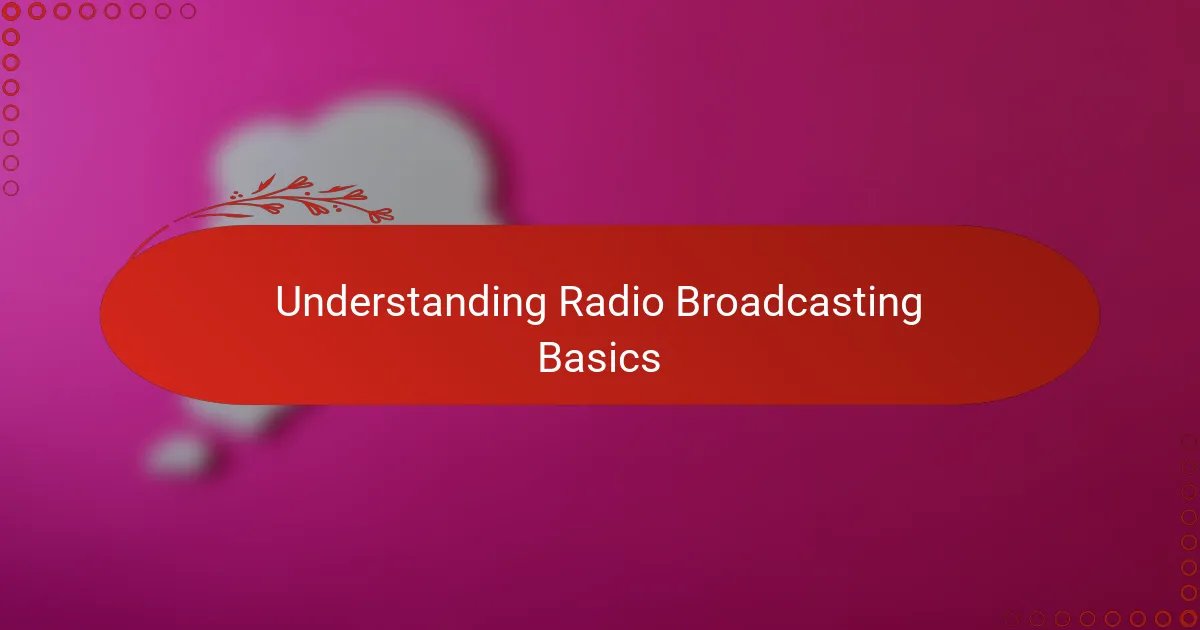
Understanding Radio Broadcasting Basics
Radio broadcasting, at its core, is about connecting with listeners through sound and stories. I remember the first time I tuned into a local station and was struck by how a simple voice could create such a powerful sense of presence. Have you ever thought about what goes into making that connection happen every time you hit play?
Behind the scenes, radio is a blend of technology and creativity. From choosing the right music to timing the segments perfectly, every detail matters. This made me realize how much skill and passion it takes to keep an audience engaged without visual cues—something that’s both challenging and fascinating.
What really stands out to me is how radio shapes shared experiences. When a DJ picks the perfect song or delivers a memorable message, it can feel like a private moment shared with thousands. Isn’t it amazing how these invisible waves carry so much emotion and community?
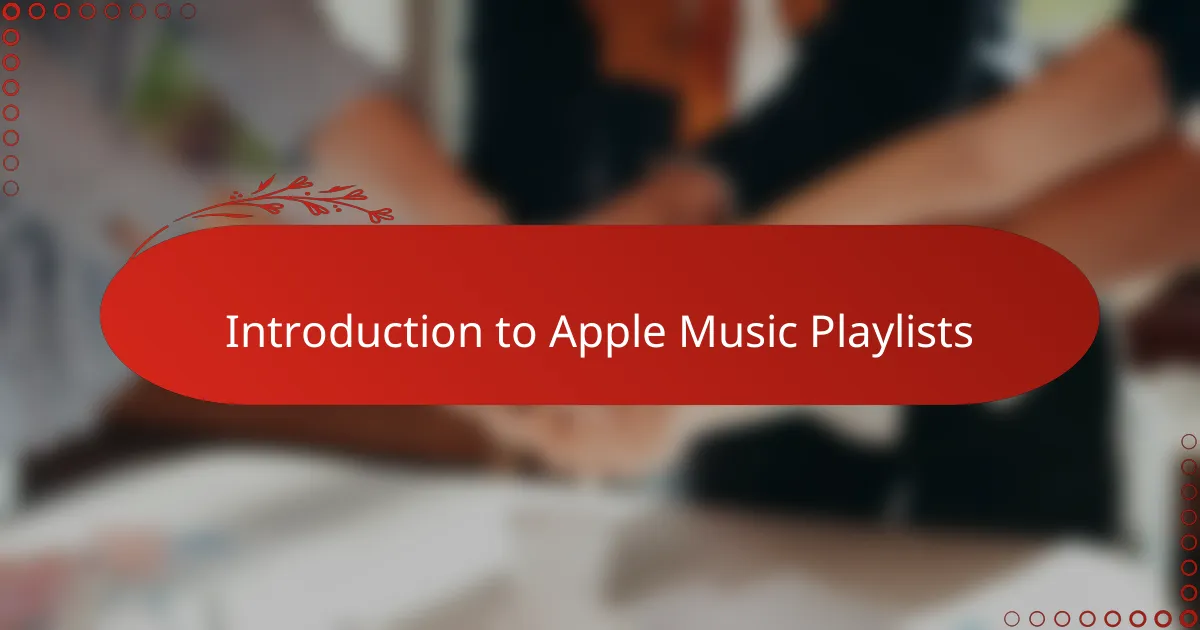
Introduction to Apple Music Playlists
Apple Music playlists, to me, are like carefully curated radio shows you can carry in your pocket. I remember the first playlist I made—just a mix of my favorite tracks that somehow told a story I wanted to share. Have you ever crafted a playlist that perfectly captured a mood or moment?
What fascinates me about these playlists is how they go beyond mere song collections. Each list can create a vibe, guide emotions, or even introduce listeners to new artists, much like a skilled radio host would do. It’s a unique blend of personal taste and storytelling.
I often wonder how this digital curation compares to traditional radio broadcasting. But from my experience, both rely on the power of connection through sound, just delivered in different ways that fit our modern habits.
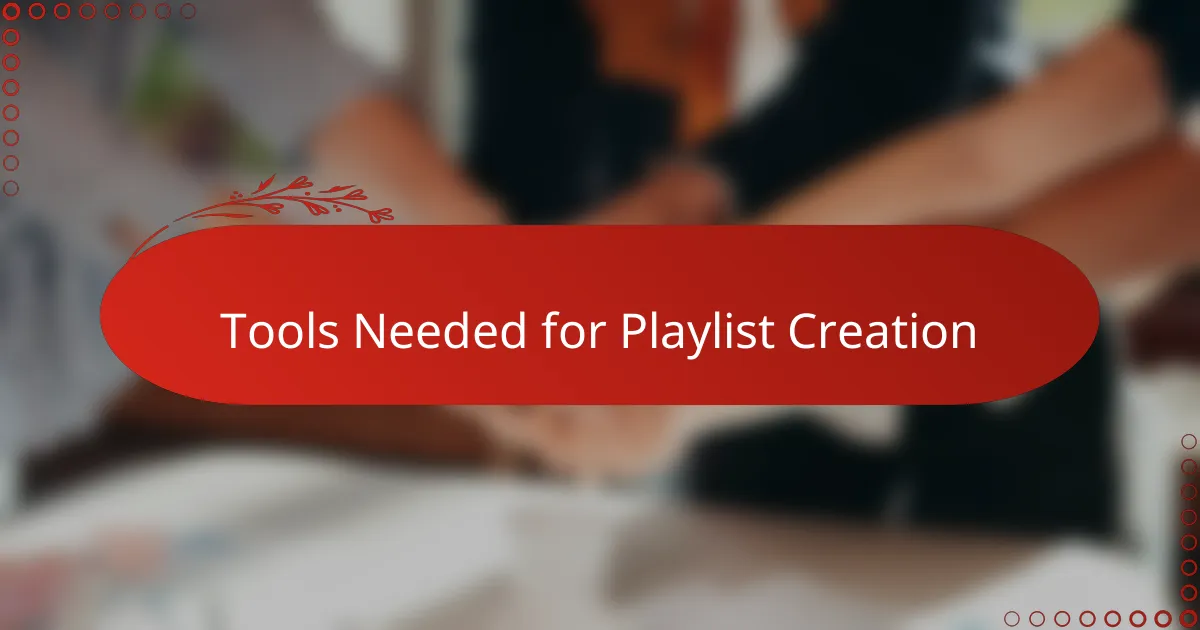
Tools Needed for Playlist Creation
When I first started creating playlists on Apple Music, the main tool I needed was simply my device—whether it was my iPhone or Mac. Having access to the Apple Music app made everything so accessible; I could browse songs, albums, and genres all in one place. Do you remember how liberating it felt to have virtually any track at your fingertips?
Beyond the device itself, a reliable internet connection became crucial. Streaming millions of songs seamlessly meant I had to ensure my Wi-Fi was steady, especially when discovering new music on the fly. I often found myself frustrated when a spotty connection interrupted the flow of my playlist-building groove—have you ever experienced that?
Then, of course, there’s the Apple Music interface itself, which acts as your creative workspace. The intuitive design lets you drag and drop songs, organize them easily, and even explore curated suggestions. I appreciated how user-friendly it was since I wasn’t bogged down by complicated tools but instead focused on shaping the mood and story of my playlist. Have you noticed how a clean, simple tool really sparks creativity?
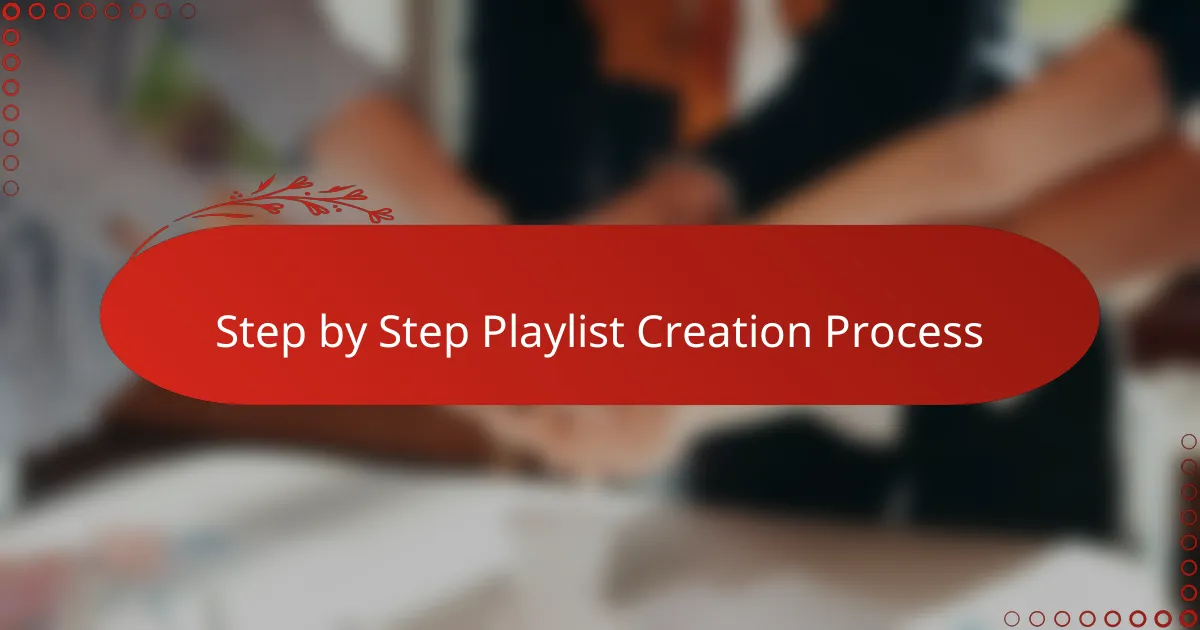
Step by Step Playlist Creation Process
Starting a playlist on Apple Music feels a bit like assembling a personal soundtrack. First, I open the app and tap the “New Playlist” button, naming it something that captures the vibe or theme I have in mind. Have you ever struggled with finding the perfect title that sets the tone before even adding a single song?
Next comes the fun but sometimes challenging part—selecting tracks. I usually browse through my library or search for new songs that fit the mood, carefully adding one by one. I find myself pausing to think, “Does this song flow well after the last one?” That attention to detail really makes the playlist feel like a story rather than just a random list.
Finally, I tweak the order and hit “Done,” but sometimes I revisit the playlist later to refine it as my mood changes or I discover new favorites. It reminds me that creating a playlist is an evolving process, much like tuning a radio set until the signal feels just right. Do you go back and revise your playlists, or do you prefer to leave them as they are?
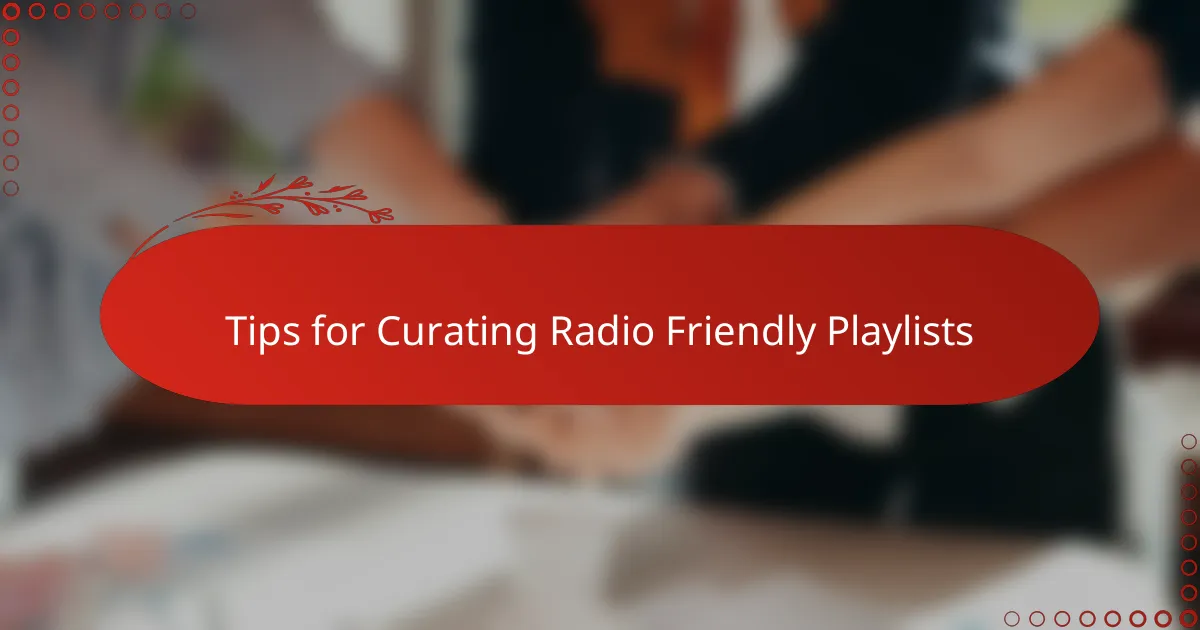
Tips for Curating Radio Friendly Playlists
When I curate radio-friendly playlists, I pay close attention to pacing. It’s not just about picking great songs but thinking about how one track leads into the next. Have you ever noticed how a sudden shift in tempo can throw off the whole listening experience? I’ve learned to balance energy and mood, making sure the flow feels natural and keeps listeners hooked.
Another tip I swear by is considering the audience’s expectations. Radio listeners often want familiar hits mixed with fresh finds, so I include a few popular tracks while sprinkling in songs that feel new but accessible. It’s like being a trusted guide—offering something comfortable yet surprising. Do you think about who might be listening when you build your playlists?
Finally, I always keep the playlist length in mind. Too long, and it risks losing attention; too short, and it might feel incomplete. In my experience, aiming for about an hour strikes the right balance for radio play. Plus, it gives enough time to tell a story without overstaying its welcome. How long do you usually make your playlists when you want to keep a steady vibe?
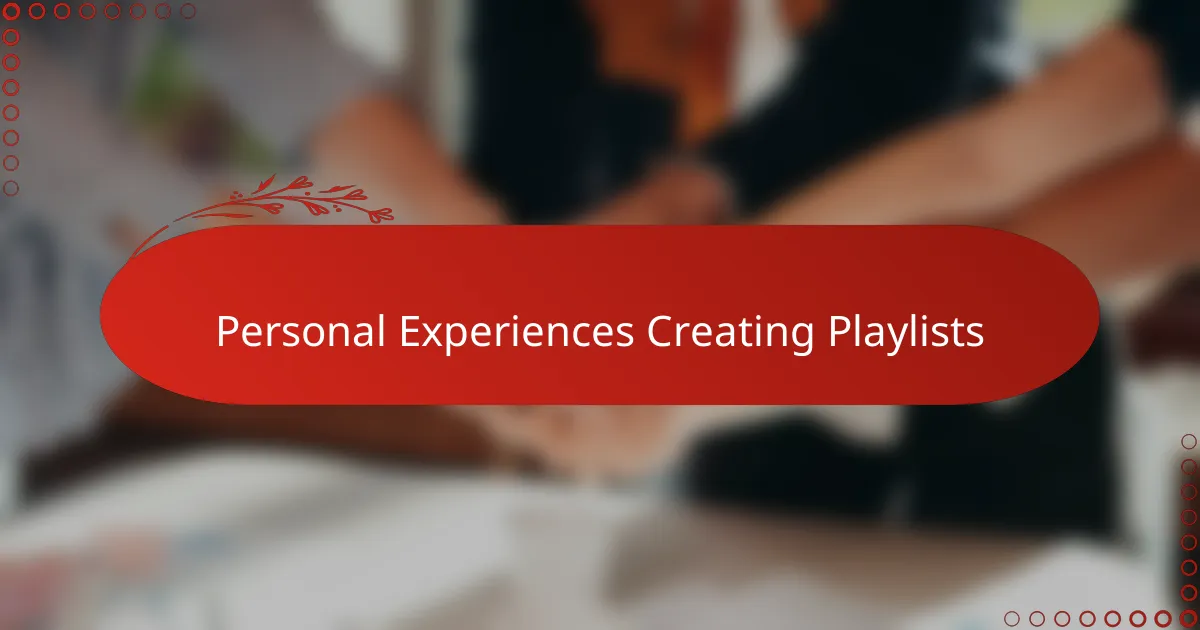
Personal Experiences Creating Playlists
Creating playlists on Apple Music always feels like a personal journey for me. I remember one evening when I was putting together a mix for a long drive—the songs I picked weren’t just random; they reflected my mood and memories of past road trips. Have you ever found that a playlist can almost act like a diary of your feelings at a specific time?
Sometimes, the process becomes surprisingly emotional. I’ve noticed that when I try to capture a certain vibe, like calm or excitement, the songs I choose almost shape how I experience that moment. It’s like crafting a soundtrack that tells my story without words. Do you find that your playlists sometimes influence your day or mindset?
On a practical note, I often revisit my playlists, tweaking them as my tastes evolve or as new tracks catch my attention. This evolving nature makes playlist creation feel less like a one-time task and more like an ongoing conversation with myself. Have you ever gone back to an old playlist and been surprised by what you hear or how you feel?
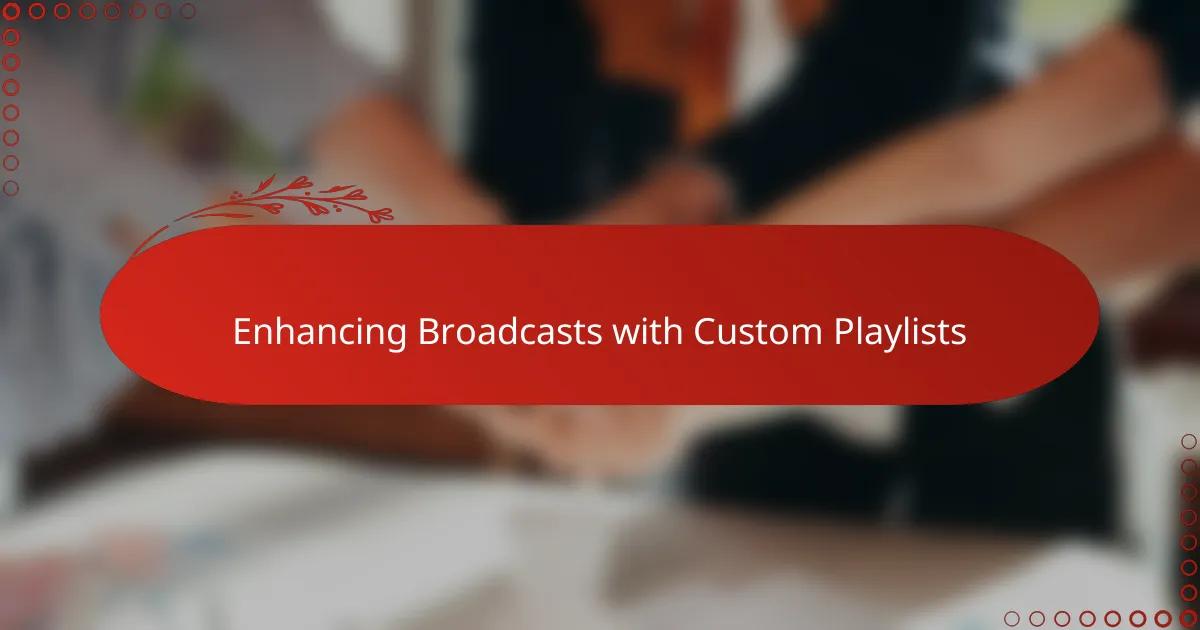
Enhancing Broadcasts with Custom Playlists
Custom playlists have completely transformed how I approach radio broadcasts. Instead of relying solely on standard rotations, I’ve found that curating specific playlists helps me set a distinct tone and mood for each segment. Have you ever noticed how the right sequence of songs can subtly guide listeners’ emotions and keep them glued to the airwaves?
What I find especially rewarding is the creative freedom that custom playlists offer. For instance, during a late-night show, I once crafted a mellow playlist that shifted gently from blues to soft jazz, creating an intimate atmosphere that listeners told me made them feel like they were part of a shared moment. Doesn’t it amaze you how well-chosen tracks can build that kind of connection without a single word?
Of course, I also pay attention to timing and variety, mixing familiar favorites with less-known gems. This blend not only sustains interest but also introduces audiences to new sounds in a way that feels natural, not forced. Have you tried this approach in your broadcasts? In my experience, it makes the playlist feel like a conversation rather than just background noise.
